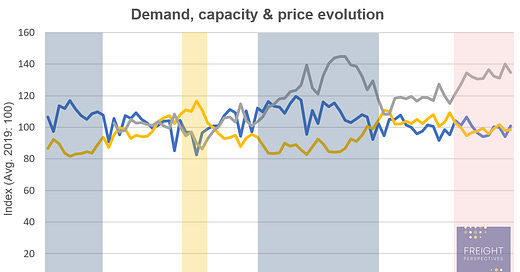Adapting to New Realities in the Freight Market
The need to move beyond old practices and adapt strategic approaches
The current economic situation presents numerous challenges for the transportation industry. In times of reduced available capacity and high prices, procurement managers must balance maintaining service quality with controlling logistics costs. Previously, they were accustomed to dealing with capacity shortages and elevated prices primarily when demand was booming - an acceptable trade-off. However, the transportation landscape has evolved, now showing capacity shortages even during periods of lower demand. Nowadays, old recipes such as pressuring incumbent carriers or simply switching to cheaper providers do not deliver the intended results anymore. Today’s circumstances require abandoning old habits and exploring new adaptation strategies.
Identify: Understanding the current situation
The available capacity and demand index have historically shown a clear inverse relationship. During high-demand periods like in 2018 and 2021-2022 (marked blue in below graph), available capacity was very low, a logical consequence. Conversely, during low-demand periods like during the 2020 COVID-19 pandemic (marked yellow), capacity was rather high. During these times, spot prices typically followed the demand evolution, reflecting classic supply-demand dynamics.
Source: Transporeon Market Insights





